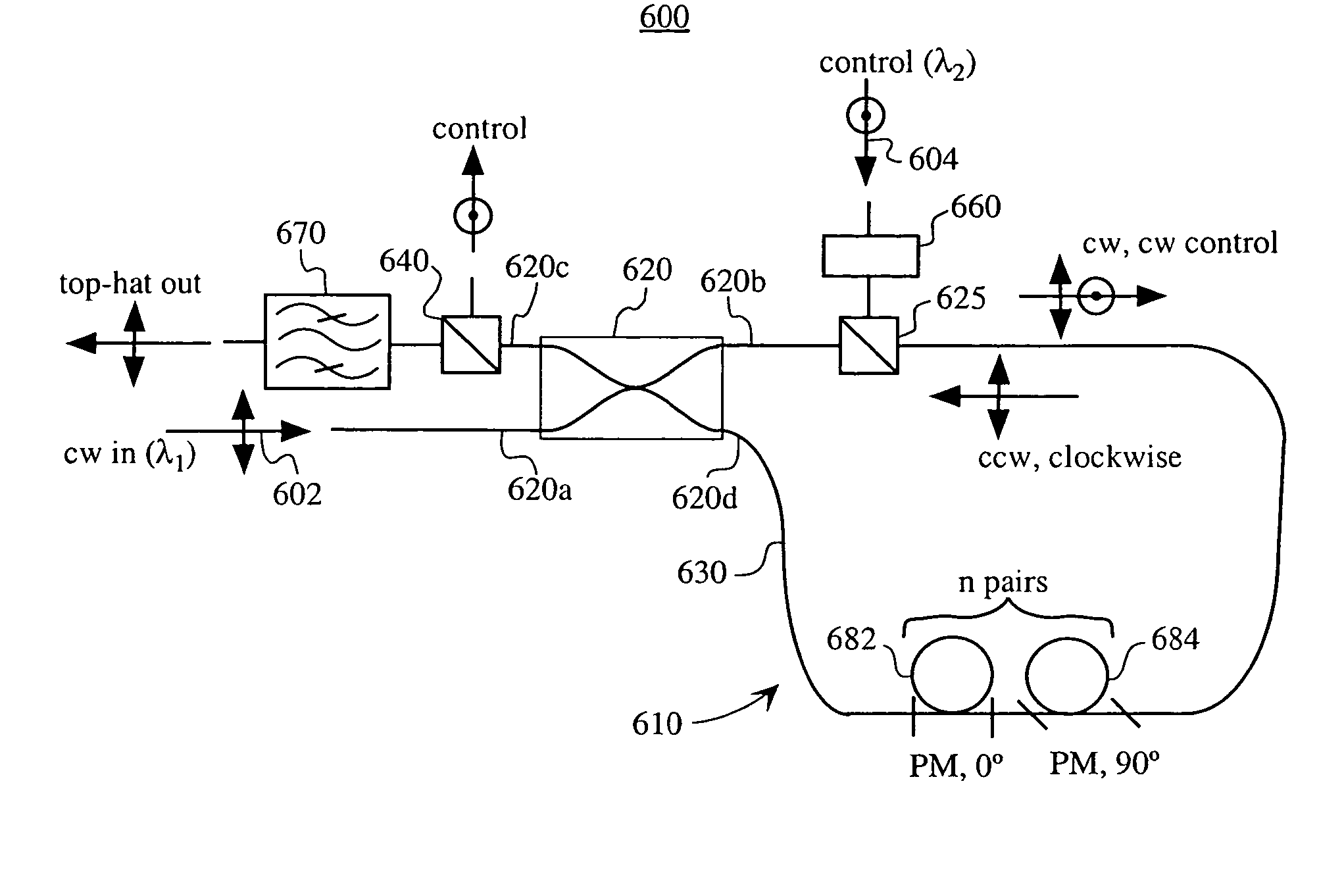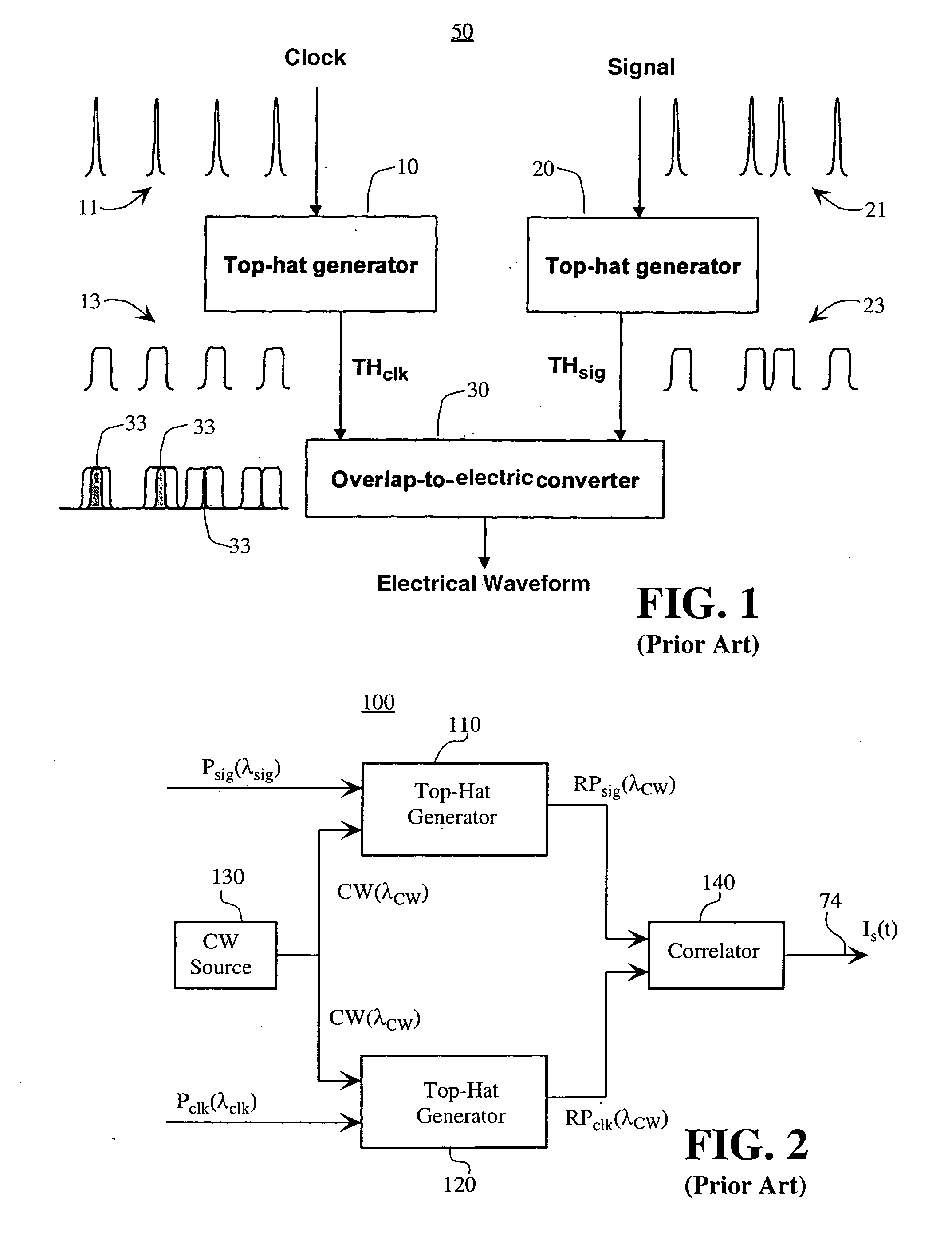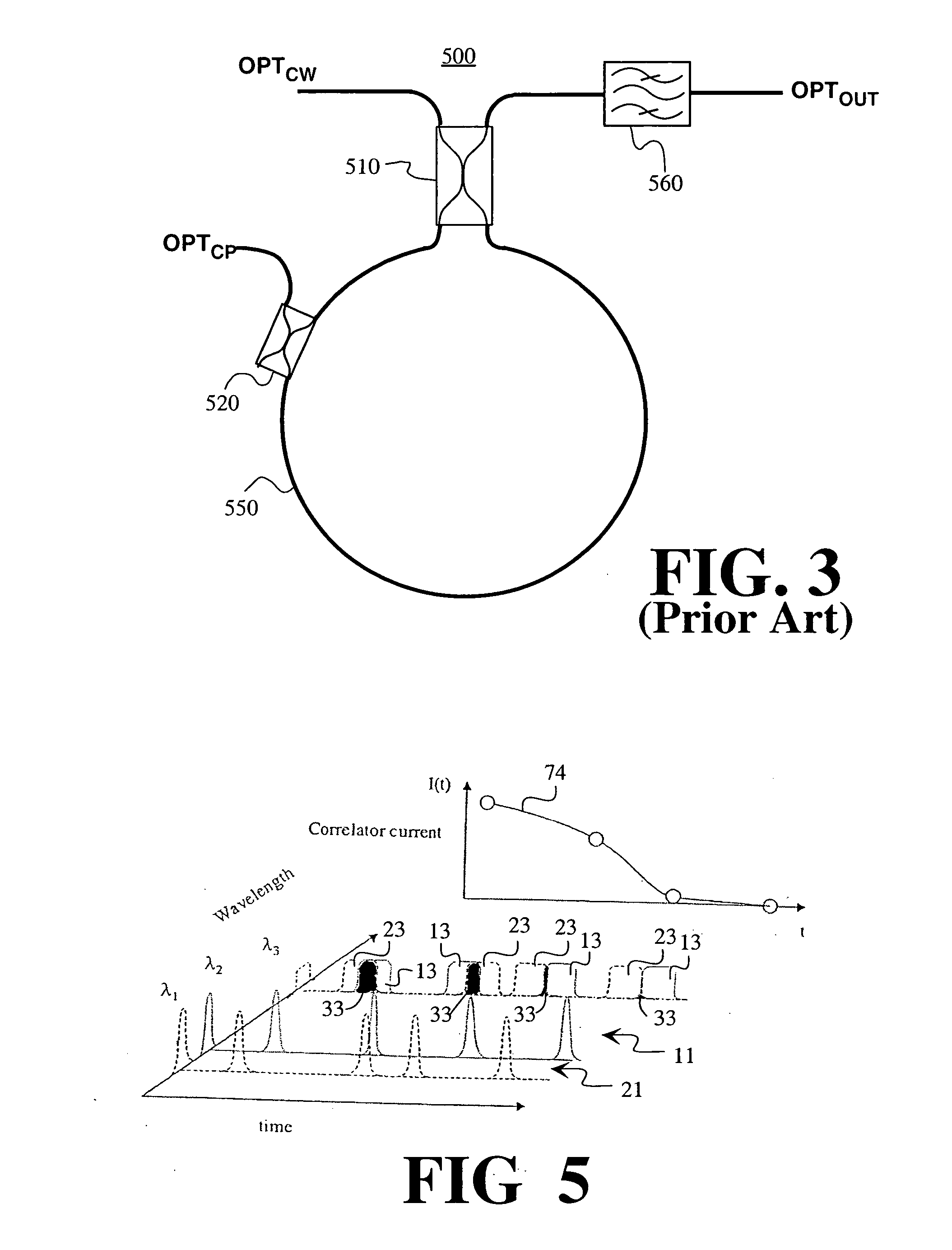Method and apparatus for optical top-hat pulse generation
a top-hat pulse and generator technology, applied in the field of top-hat pulse generators, can solve the problems of poor signal-to-noise ratio (snr), poor snr at low frequencies, and the inability of the demodulation technique to recover the dc component, so as to achieve no spread of the control pulse
- Summary
- Abstract
- Description
- Claims
- Application Information
AI Technical Summary
Benefits of technology
Problems solved by technology
Method used
Image
Examples
Embodiment Construction
The present invention now will be described more fully hereinafter with reference to the accompanying drawings, in which embodiments of the invention are shown. This invention may be embodied in many different forms and should not be construed as limited to the embodiments set forth herein.
A top-hat generator 600 according to embodiments of the present invention is shown in FIG. 6. The top-hat pulse generator 600 enables the separation of the control pulse beam and the continuous wave (CW) beam spectrally, while maintaining the desired difference in their group delay velocity, by propagating the control pulse and CW beams along two principal axes of a polarization-maintaining (PM) fiber.
The top-hat pulse generator 600 of FIG. 6 comprises a polarization-maintaining (PM) NOLM 610, which is controllable by a first order soliton. In FIG. 6, an adjustable PM coupler 620, receives a continuous wave (CW) optical signal at optical wavelength λ1 at a first arm 620a on a first side of th...
PUM
 Login to View More
Login to View More Abstract
Description
Claims
Application Information
 Login to View More
Login to View More - R&D
- Intellectual Property
- Life Sciences
- Materials
- Tech Scout
- Unparalleled Data Quality
- Higher Quality Content
- 60% Fewer Hallucinations
Browse by: Latest US Patents, China's latest patents, Technical Efficacy Thesaurus, Application Domain, Technology Topic, Popular Technical Reports.
© 2025 PatSnap. All rights reserved.Legal|Privacy policy|Modern Slavery Act Transparency Statement|Sitemap|About US| Contact US: help@patsnap.com



